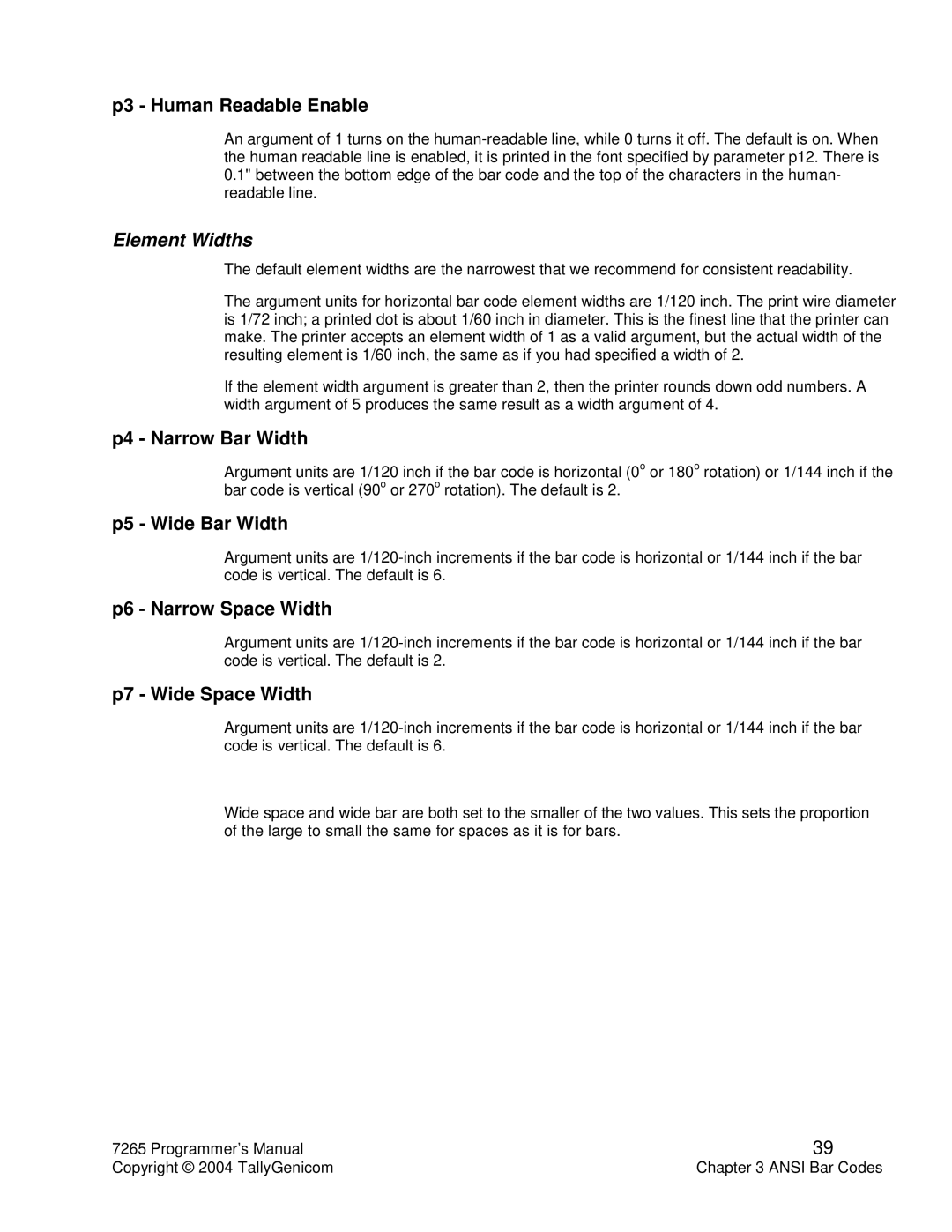p3 - Human Readable Enable
An argument of 1 turns on the
Element Widths
The default element widths are the narrowest that we recommend for consistent readability.
The argument units for horizontal bar code element widths are 1/120 inch. The print wire diameter is 1/72 inch; a printed dot is about 1/60 inch in diameter. This is the finest line that the printer can make. The printer accepts an element width of 1 as a valid argument, but the actual width of the resulting element is 1/60 inch, the same as if you had specified a width of 2.
If the element width argument is greater than 2, then the printer rounds down odd numbers. A width argument of 5 produces the same result as a width argument of 4.
p4 - Narrow Bar Width
Argument units are 1/120 inch if the bar code is horizontal (0o or 180o rotation) or 1/144 inch if the bar code is vertical (90o or 270o rotation). The default is 2.
p5 - Wide Bar Width
Argument units are
p6 - Narrow Space Width
Argument units are
p7 - Wide Space Width
Argument units are
Wide space and wide bar are both set to the smaller of the two values. This sets the proportion of the large to small the same for spaces as it is for bars.
7265 Programmer’s Manual | 39 |
Copyright © 2004 TallyGenicom | Chapter 3 ANSI Bar Codes |
